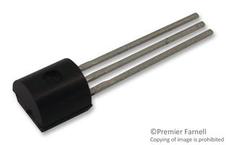Datasheet 搜索 > 接口芯片 > Maxim Integrated(美信) > DS2401+T&R 数据手册 > DS2401+T&R 产品设计参考手册 4/27 页

¥ 9.911
DS2401+T&R 产品设计参考手册 - Maxim Integrated(美信)
制造商:
Maxim Integrated(美信)
分类:
接口芯片
封装:
TO-226-3
描述:
MAXIM INTEGRATED PRODUCTS DS2401+T&R 芯片, 特殊功能
Pictures:
3D模型
符号图
焊盘图
引脚图
产品图
页面导航:
应用领域在P5
导航目录
DS2401+T&R数据手册
Page:
of 27 Go
若手册格式错乱,请下载阅览PDF原文件

API Fundamentals
The different APIs for communicating with 1-Wire devices have common features that reflect the fundamental
communication issues arising from the protocol. Figure 2 outlines the common groupings of the functions for
the different APIs. Since most 1-Wire devices have memory, the memory I/O functions are treated as a
common API group although the functions do not apply to all devices. All other nonmemory specialty
functions are lumped into the device-specific device grouping.
SESSION
Negotiate exclusive use of the 1-Wire bus. This is particularly important on operating systems or
environments where several processes or threads could simultaneously attempt access to the same 1-Wire
bus. Exclusive use of the network is required when doing multiple operations that must not be interrupted on
a single device.
LINK
Primitive 1-Wire bus communication functions. All 1-Wire communication can be condensed down to the
'reset' that resets all devices and reading and writing bits. This group can also contain functions to set the
electrical characteristics of the bus, such as when providing special EPROM programming pulses or power
delivery.
NETWORK
Network functions for device discovery and selection. The unique registration number programmed into
each 1-Wire device is used as its network address. These functions can be constructed from the LINK level
functions. Data sheets for 1-Wire devices refer to these as ROM commands, as the registration number is
Read-Only Memory. Some 1-Wire masters contain built-in network functions, because they are more
efficient than link functions.
TRANSPORT
Block communication and primitive read/write memory functions. This can also include packet
read/write memory functions. These functions are constructed from the NETWORK and LINK group
functions.
FILE
File memory level functions using the 1-Wire File Structure (refer to application note 114, "1-Wire File
Structure"). These functions are constructed from the NETWORK and TRANSPORT level functions, and are
only useful for devices with more then one page of memory.
DEVICE
Device-specific 'high-level' functions. These functions are often constructed from the NETWORK,
TRANSPORT, and LINK group functions and perform operations such as reading temperature values or
setting a switch state.
Figure 2. API function groupings.
The typical sequence to use these functions is outlined in Figure 3. The SESSION functions wrap around the
communication calls to the device, which typically involve using a NETWORK function followed by a memory
or DEVICE-specific operation.
Page 4 of 27
器件 Datasheet 文档搜索
AiEMA 数据库涵盖高达 72,405,303 个元件的数据手册,每天更新 5,000 多个 PDF 文件







